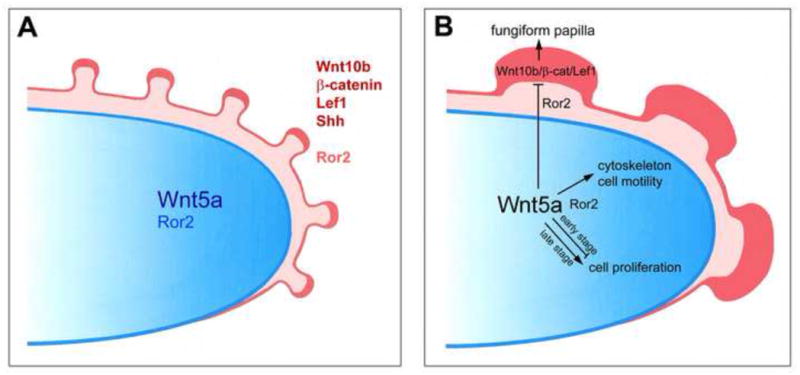Fig. 12.

Proposed model for noncanonical Wnt5a signaling: to regulate mesenchymal cell proliferation, cytoskeleton and migration, and via a paracrine path to suppress canonical Wnt signaling in epithelium and regulate fungiform papillae. A. The tongue diagram illustrates documented canonical Wnt signaling factors Wnt10b, β-catenin, Lef1; fungiform papilla marker Shh; and, Wnt signaling coreceptor R or2, in the tongue papillae (red) and epithelium (light red). Noncanonical Wnt5a (blue), in a graded distribution, and Wnt signaling coreceptor Ror2 (light blue) are noted in the tongue mesenchyme. B. In a proposed model, mechanisms are suggested for Wnt5a to signal in mesenchyme and epithelium to regulate tongue and papilla development. We suggest that Wnt5a signaling is mediated by Ror2. Wnt5a in the mesenchyme signals via Ror2 locally to support the cell cytoskeleton and motility, and to affect cell proliferation in a stage-specific manner. Wnt5a signals via Ror2 in the epithelium to inhibit Wnt10b canonical Wnt signaling and thereby balance fungiform papilla formation.
